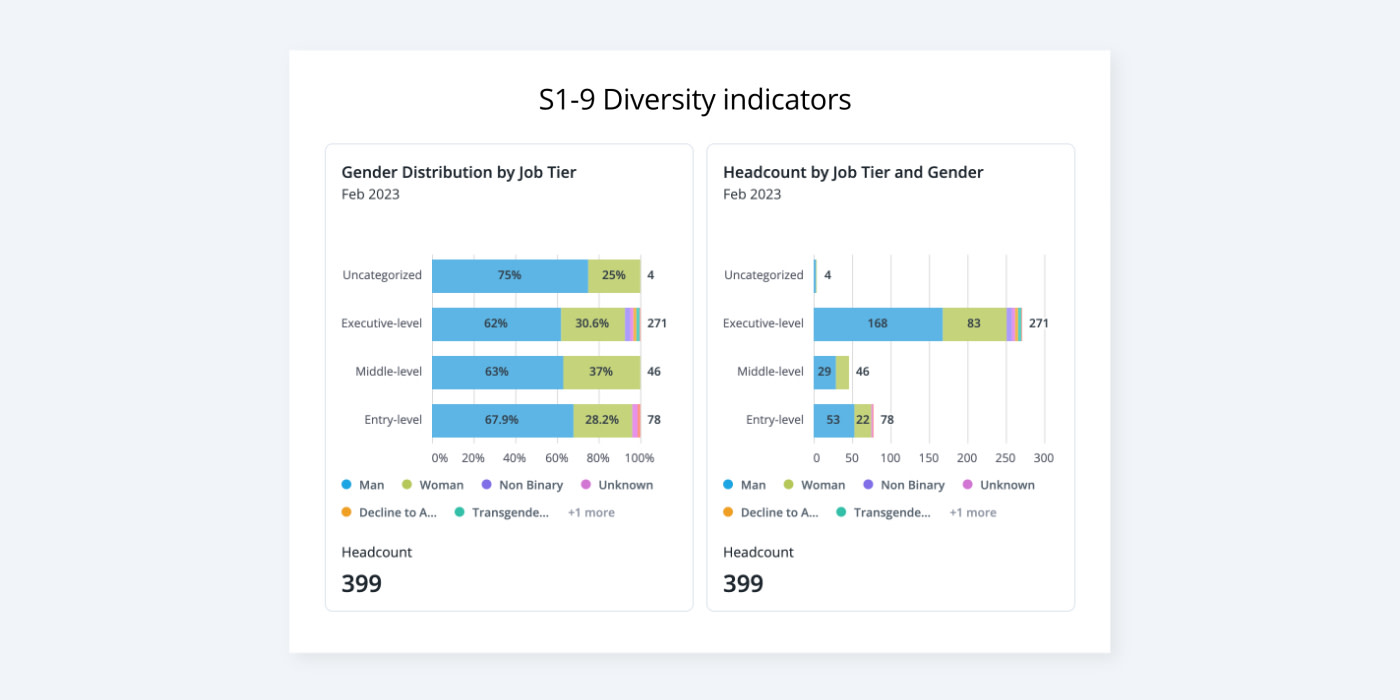CSRD and Employer Brand: When Private Workforce Issues Become Public Interest
The new EU CSRD regulations are designed to provide more transparent data to investors, other stakeholders, and the public. The increase in data availability can also pose a risk to employer brand.

The ESRS S1 Own Workforce measures form part of the Corporate Sustainability Reporting Directive (CSRD), and present a major challenge for HR functions. To comply, HR teams must gather, analyze, interpret, and ultimately report the required disclosures in time for the first reporting deadline. Furthermore, public disclosure of the outcomes presents a wider challenge to the employer brand and image of the business—and its reputation as an employer.
The trend towards public ESG (Environmental, Social, and Governance) disclosures demonstrates how responsible business is no longer perceived as optional, but is fundamental to the overall public perception of a corporation. Investors, customers, and potential employees vote with their feet if businesses fall short of expectations. This new set of EU regulations adds accountability to workforce matters, requiring companies to disclose information on a level not seen before.
ESRS S1 ushers full visibility
The new EU CSRD regulations are designed to provide more transparent data to investors, other stakeholders, and the public. The ESRS S1 Own Workforce section requires reporting disclosures on more than 30 people metrics, including the gender pay gap, diversity across levels of seniority, and adequate wages across a geographically dispersed workforce. Once filed, reports will make this information—both the good and the bad—available to stakeholders and the public.
Under these new regulations, the company’s people data is effectively no longer the sole property of the company, but public information. Non-compliance to these disclosure requirements will result in substantial fines, as well as reputational damage from the public at large.
Here’s a breakdown of a few of the key metrics required in ESRS S1, which will have a big impact on how your employer brand is viewed by current and potential employees, customers, partners, regulators, and the wider public.
1. Pay transparency
Related ESRS S1 Disclosure Requirements
Adequate wages (S1-10)
Compensation (S1-16)
Compensation: The disclosure requirements in this category will give pay transparency to investors, workers, competitors, and prospective employees. Employer brand, compensation, and talent acquisition teams should be aware because the public disclosure of the company’s own metrics, as well as those of its competitors, may affect their strategy and tactics going forward.
Adequate wages: This measure has both reputational and labor market implications for businesses. Workers who realize they are paid below benchmark rates may leave or advocate for pay raises. For organizations that have publicly branded themselves as being compassionate and responsible, public reporting of inadequate wages will prompt awkward questions about sincerity and trust.
Gender pay gap: This can be difficult to address, because the root issue is not only about equitable pay, but is often about equitable representation. Many organizations find that making progress is painfully slow. Public reporting of this measure will create an impression of the organization's degree of progressiveness in the minds of third parties.
Ratio between highest and median earner: Even if this measure is already recorded within your organization—and it can be a lot trickier than it sounds—it may not be widely publicized, either internally or externally. With income and wealth inequality growing across the world, this is becoming a very sensitive topic. Your communications teams should be prepared to discuss it in an open and constructive manner.
2. Diversity Indicators
Related ESRS S1 Disclosure Requirements
Gender distribution at top management level (S1-9)
Distribution of employees by age group: This is a measure that will demonstrate where businesses are being successful in attracting and retaining workers of all ages, and thus providing employment and growth opportunities for all members of society. As with gender representation, organizations need creditable commentary and data insights to support any public statements they make, preferably supported by data-informed insights. Beyond this, such commentary and insights can, of course, be levers for organizational change themselves.
Gender distribution at the top management level: While diversity, equity, and inclusion (DEI) has been an HR priority for many years now, many organizations have found it difficult to make progress. Even if they make headway at the lower levels, proportional representation of women often falls away in senior positions, making it often a constant effort to maintain—let alone increase—representation. Businesses must be ready to comment on their projects and initiatives to improve gender distribution at top management levels.

Summary
In advance of the first reporting deadline, companies will need to have all of the data collected and prepared for use, with enough time dedicated to agree on a common interpretation across the business and to write up the mandatory explanation that must accompany the data as part of the disclosure.
Preparing for and successfully complying with the new rules will also require a new level of communication between ESG and HR professionals, communication plans and skills to gain the attention and assistance of other teams (including boards), and the right technology to deliver on the new requirements.
To find out how Visier can help you meet your EU reporting goals, request a demo.

Learn more about CSRD ESRS S1 reporting
ESRS S1 "Own Workforce" is a set of reporting disclosures included in the EU CSRD.
Get the scoop about what EU businesses need to know re: EU CSRD ESRS S1.
Workforce reporting requirements in CSRD will increase transparency amongst C-level executives, internal employees, and external stakeholders. Here's what executives need to know.
New workforce-related requirements around ESG reporting should be firmly within the domain of the HR department. Learn why, and the benefits for organizations.


